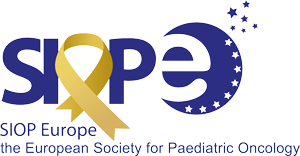
Our community has declared its strong commitment to act and identify viable solutions to improve the cure rate, the quality of cure and the long-term survival of all patients via the implementation of the finalised
SIOPE European Cancer Plan for Children and Adolescents.
First elaborated within the EU project ENCCA (
www.encca.eu), the Plan proposal has been nourished by the contribution, endorsement and engagement of all relevant stakeholders involved in childhood cancer. The outcome of this extensive consultation process has been the agreement of our multidisciplinary community to call for a European Cancer Plan for Children and Adolescents to address the 7 key objectives for the next decade:
- Innovative treatments: to introduce safe and effective innovative treatments into standard care;
- Precision cancer medicine: to use improved risk classification as well as biological characteristics of both the tumour and the patient to help guide decisions on which therapies to use;
- Tumour biology: to increase knowledge of tumour biology and speed up translation from basic research to clinical care to benefit patients;
- Equal access: to bring about equal access across Europe to standard care (in both diagnosis and treatment), expertise and clinical research;
- TYA: to address the specific needs of teenagers and young adults (TYA), in cooperation with adult oncology;
- Quality of survivorship: to address the consequences of cancer treatment such as long-term side effects, to better understand the genetic background/risk of an individual, and to improve quality of life of childhood cancer survivors;
- Causes of cancer: to understand the causes of paediatric cancers and to address prevention wherever possible.
Our community also agreed to introduce several cross-tumour platforms and projects to address the critical variables influencing success, such as outcome research, radiotherapy quality assurance, development of new innovative paediatric oncology drugs, education and training, ethics and psycho-social aspects of childhood cancer and ‘oncopolicy’ at the EU-level (see below the complete list). In particular, SIOPE is also engaging in the creation of a European Reference Network to facilitate access to cross-border healthcare for childhood cancer patients via the
ExPO-r-Net project.
Since the official launch of the Plan last year – first in September at the European Cancer Congress, when it was presented to professionals across the cancer continuum, and then in November at the
SIOPE – MAC Launch event at the European Parliament, where it has been illustrated to policy-makers and other EU stakeholders – SIOPE focused on the next steps in the collective implementation of the Plan. At the last ENCCA General Assembly, our community agreed on the names of the main leaders responsible for the implementation of each objective, platform and project because of his/her particular expertise and experience in a specific area (see table below).
| Objective |
Leader |
| 1. Innovative treatments |
Gilles Vassal |
| 2. Precision Cancer Medicine |
Martin Schrappe |
| 3. Tumour Biology |
Gilles Vassal & Martin Schrappe |
| 4. Equal Access |
Ruth Ladenstein |
| 5. Teenagers & Young Adults |
Stefan Bielack |
| 6. Quality of survivorship |
Lars Hjorth |
| 7. Causes of Cancer |
To be decided |
| Platforms |
Leader |
| Clinical Trial Facility Platform (CTF) |
Pam Kearns (lead) & Maria Grazia Valsecchi (co-lead) |
| PICORET Project |
Kathy Pritchard-Jones |
| QUARTET Project |
Tom Boterberg |
| CDDF-SIOPE-ITCC Platform |
Gilles Vassal |
| Ethics, Social Sciences & Humanities |
Francois Doz |
| SIOPE IT Portal |
SIOPE Office |
| Underlying Activities |
Leader |
| Communication |
SIOPE President & Office |
| Oncopolicy programme |
Martin Schrappe (SIOPE President) |
| Training and education programme |
Riccardo Riccardi |
As a stronger multidisciplinary cooperation between all types of professionals involved in the care of young patients and survivors is crucial to make this Plan a success, our Society is effectively coordinating and steering the achievement of these goals by strengthening its key partnerships with other actors (adult oncology, parent/patients and survivors, industry, etc.).
In the following months, our Society will consolidate all contributions and will thus have a clearer view on the next steps to take as concerns timelines, deliverables and milestones to be accomplished, which will be promptly communicated to our members.
 Our community has declared its strong commitment to act and identify viable solutions to improve the cure rate, the quality of cure and the long-term survival of all patients via the implementation of the finalised SIOPE European Cancer Plan for Children and Adolescents.
First elaborated within the EU project ENCCA (www.encca.eu), the Plan proposal has been nourished by the contribution, endorsement and engagement of all relevant stakeholders involved in childhood cancer. The outcome of this extensive consultation process has been the agreement of our multidisciplinary community to call for a European Cancer Plan for Children and Adolescents to address the 7 key objectives for the next decade:
Our community has declared its strong commitment to act and identify viable solutions to improve the cure rate, the quality of cure and the long-term survival of all patients via the implementation of the finalised SIOPE European Cancer Plan for Children and Adolescents.
First elaborated within the EU project ENCCA (www.encca.eu), the Plan proposal has been nourished by the contribution, endorsement and engagement of all relevant stakeholders involved in childhood cancer. The outcome of this extensive consultation process has been the agreement of our multidisciplinary community to call for a European Cancer Plan for Children and Adolescents to address the 7 key objectives for the next decade:
